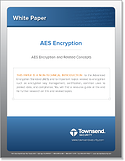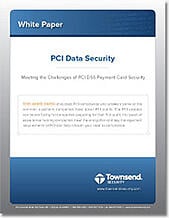Webinar: Protecting PHI and Managing Risk - HIPAA Compliance |
If you knew that something was going to happen to your business that would cost you not only your clients' trust but also $13 million (the average cost of a healthcare data breach), would you try to prevent that thing from happening?
According to the Ponemon Institute study, Third Annual Benchmark Study on Patient Privacy & Data Security, healthcare data breaches cost the industry $7 billion dollars annually. Unfortunately, that's not the most shocking number of the study. As it turns out, 94% of healthcare organizations have experienced at least one data breach over the past two years. Almost half of all healthcare organizations have experience at least five data breaches each over the past two years. This means that almost 100% of healthcare organizations have lost patient data such as private health information, names and addresses, credit card information, and social security numbers. If you're wondering how identity theft happens, this is it!
In a recent article published by Forbes, Rick Kam of ID Experts and Larry Ponemon of the Ponemon Institute pointed four major issues around data security in the healthcare industry:
1. Cost of a data breach: "Data breaches cost the U.S. healthcare industry nearly $7 Billion annually."
The cost to the industry includes losing patient trust, providing patients with credit monitoring services, as well as paying out hefty fines to HHS. The cost to patients often comes in the form of identity theft.
2. Electronic records: "The rise of electronic health records (EHRs) is putting patient privacy at risk."
Using computers to store and organize patient data is a blessing to most healthcare providers. However, maintaining electronic records not only causes healthcare organizations to fall under state and industry data privacy regulations, it also opens up the door to data breaches caused not only by external hackers looking to make a buck, but also employee mistakes which account for about one third of all data breaches.
3. Mobile devices and the cloud: "The rise of mobile and cloud technology threaten the security of patient data."
These days many doctors and healthcare providers use personal mobile devices to access patient data. How are these devices protected? Often they are not. Since many organizations include healthcare are now using cloud providers to store data, cloud security has also become a hot topic. How do you secure your data stored in the cloud, when it may be accessed by other users? Encryption and encryption key management is the best place to start. [Blog: 3 ways to manage encryption keys in the cloud]
4. "Little time, even less money"
Budget is one of the biggest factors that goes in an organization's data security plan. The tools needed for a comprehensive data security plan such as encryption and encryption key management may seem expensive and complicated, but the solutions out there today are in fact cost-effective and easier than ever. In the end, a company's security posture really comes down to priorities. Is preventing a multi-million dollar data breach a priority? Or will you leave it up to chance?
Encrypting your data at rest and data in motion is the first critical step to protecting your database. Always look for NIST and FIPS certifications to ensure you are using the best encryption and key management tools available.
View our webcast “Protecting PHI and Managing Risk – HIPAA/HITECH Compliance” to learn how your organization can manage their risk of a data breach and achieve breach notification safe harbor status.













